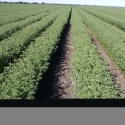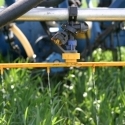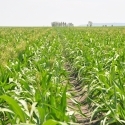11 Oct 2012
Nitrogen Loss Pathways

Rob Norton, IPNI ANZ Regional Director
Cliff Synder, IPNI N Program Director
Nitrogen is a tricky critter as it can be lost in several ways. It can leach down the profile before roots access it. It can also be lost via denitrification to nitrous oxide under water logged conditions or via ammonia when at or near the surface. The proportions of N lost can be quite variable and this depends on soil and environmental conditions.
Greater fertilizer N costs and knowledge of the environmental impacts of N losses are driving us all toward better N stewardship. Weather, or the lack of its control, hinders us from perfect N management. But weather variability should not prevent us from striving for lower losses down the “more traveled N loss pathways”.
The nitrate leaching and drainage N loss pathway is probably the “more traveled” in humid, higher rainfall environments (>625 to 750 mm average annual rainfall). Nitrate losses under annual crop systems may range between 10 and 40 kg N / ha / year in higher rainfall environments. Nitrate losses under deep-rooted perennial crops are often lower.
Ammonia losses can occur if rainfall, irrigation (>50 mm within a few days after application), or tillage do not soil incorporate surface-applied urea or urea containing N fertilizers within a few days after application. Research reported by the University of Melbourne* measured ammonia losses under field conditions for a range for urea, urea-ammonium nitrate and ammonium sulfate. One experiment in the Mallee at Walpeup (pH 7.3) showed that 46 kg N as urea showed total N losses of 2.5 kg kg N/ha (5.4%) over the first 10 days, with 4 mm of rain two days after application. There was 0.85 kg N/ha lost as ammonia from the UAN treatment under the same conditions.
At Longerenong, on a heavier soil (pH 7.8), urea surface applied at 46 kg N/ha lost 10.6 kg N in the 18 days after application, with only a small amount of rain (2mm) over the first 7 days after application. Ammonium sulfate was also surface applied in this experiment, and it showed lower losses than urea (5.7 kg N/ha) while UAN had similar losses to ammonium sulfate (5.6 kg N/ha). A second experiment at this site showed losses of 5.8 kg N/ha (urea), and 1.3 kg N/ha (ammonium sulfate). This second experiment had rain soon after application and the fertilizers were also applied to damp soil.
The losses of ammonia with early spring applications vary with location and fertilizer sources. There is substantially less volatilization losses from UAN or ammonium sulfate compared to urea. The two experiments at Longerenong one week apart showed how small differences in weather conditions and initial soil water content can affect the amount of ammonia lost.
Gaseous loss of N from soils as nitrous oxide (a potent greenhouse gas affecting climate change), through nitrification and denitrification processes, is often <2 to 8 kg N/ha/y in humid regions and may be <1 to 2 kg N/ha/y in less humid regions. However, the losses can be high if soil nitrate levels are high and the soils are waterlogged, and recent Australian research has shown losses that would be agronomically significant under these conditions. While this N loss is globally important, under most situations it may have small economic significance to the majority of individual landowners and crop producers. Loss of N during denitrification especially in wet fine-textured soils with poor internal drainage, is a more prominent N loss compared to nitrous oxide.
From an economic vantage point, the focus for most of us should be on the “more traveled N loss pathway” in our own particular plant and soil system. That means taking management action to reduce the risks of loss via nitrate leaching/drainage or ammonia volatilization. To start, we need to better understand the characteristics, properties and best management practices for the N fertilizers we have available.
The use of nitrification inhibitors and/or urease inhibitors are options under situations where losses are expected. Research is currently investigating the magnitude of these losses and IPNI will keep you posted on this research as it becomes publically available.Consider visiting the Nutrient Source Specifics articles and talk with your nutrient supplier, crop adviser, or agricultural professional to learn more about the N fertilizers available for your use.
* Turner DA, RE EDis, D Chen, JR Freney, OT Denmead 2012. Ammonia volatilization from nitrogen fertilizers applied to cereals in two cropping areas of southern Australia. Nutrient Cycling in Agroecosystems, 93, 113-126




